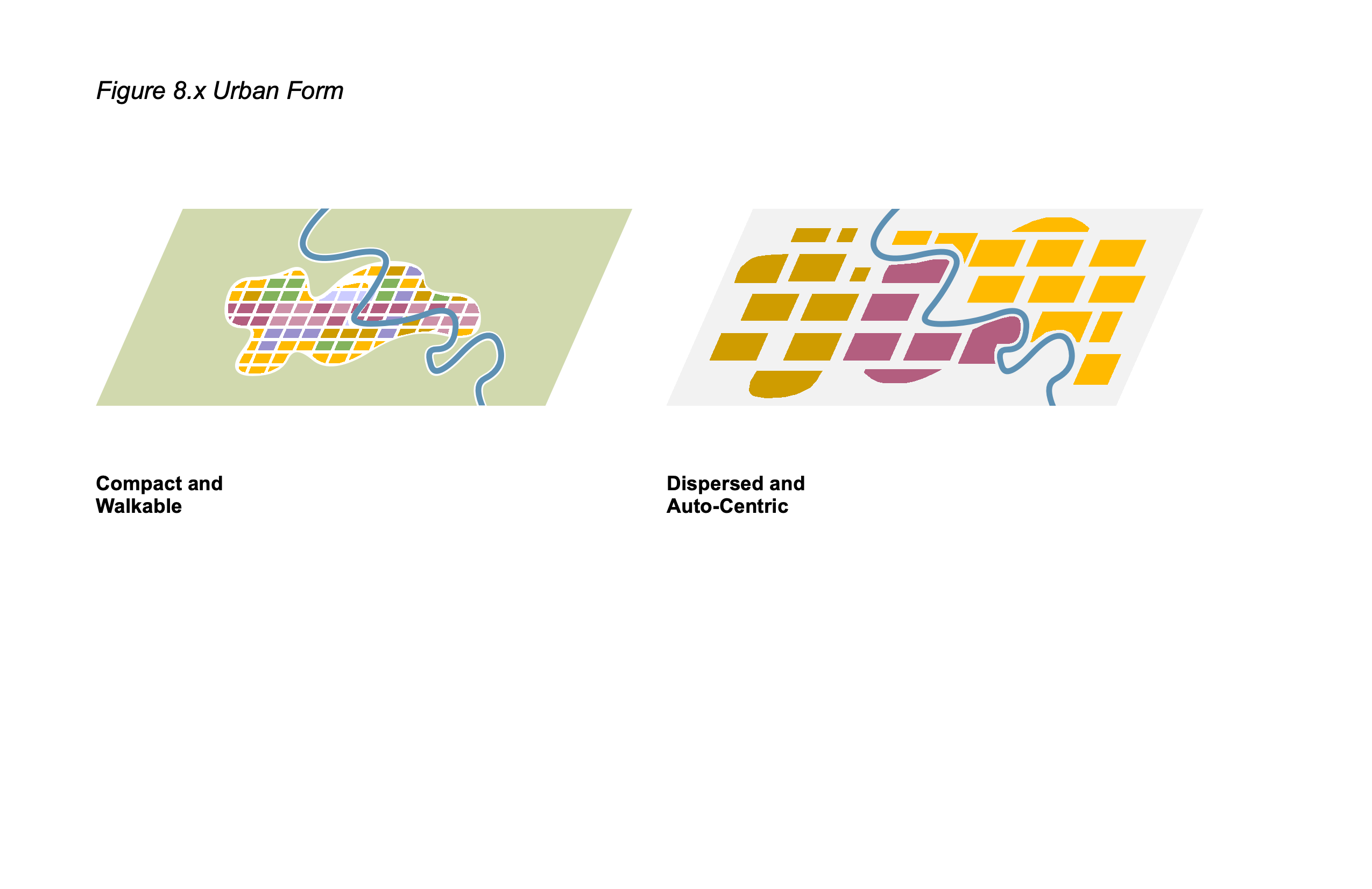Figure 8.16
Figure caption
Figure 8.16: Urban form and implications for GHG emissions. Compact and walkable urban form is strongly correlated with low GHG emissions and characterised by co-located medium to high densities of housing and jobs, high street density, small block size, and mixed land use (Seto et al. 2014). Higher population densities at places of origin (e.g., home) and destination (e.g., employment, shopping) concentrate demand and are necessary for achieving the Avoid-Shift-Improve (ASI) approach for sustainable mobility (Chapters 5 and 10). Dispersed and auto-centric urban form is strongly correlated with high GHG emissions, and characterised by separated land uses, especially of housing and jobs, low street density, large block sizes, and low urban densities. Separated and low densities of employment, retail, and housing increase average travel distances for both work and leisure, and make active transport and modal shift a challenge. Since cities are systems, urban form has interacting implications across energy, buildings, transport, land use, and individual behaviour. Compact and walkable urban form enables effective mitigation while dispersed and auto-centric urban form locks-in higher levels of energy use. The colours represent different land uses and indicate varying levels of co-location and mobility options.
